| 첨부 '1' |
|---|
| author | Jong Seung Kim |
|---|---|
| journal | Journal of the American Chemical Society |
| Homepage | http://orgchem.korea.ac.kr/ |
In this study, we show that a photocatalytic superoxide radical (O2−•) generator, NI-TA, triggers pyroptosis in cancer cells. NI-TA was designed to take advantage of an intramolecular triplet-ground state splitting energy modulation approach. Detailed studies revealed that the pyroptosis triggered by NI-TA under conditions of photoexcitation proceeds through a caspase-3/gasdermin E (GSDME) pathway rather than via canonical processes involving caspase-1/gasdermin-D (GSDMD). NI-TA was found to function via a partial-O2-recycling mode of action and to trigger cell pyroptosis and provide for effective cancer cell ablation even under conditions of hypoxia (≤2% O2). In the case of T47D 3D multicellular spheroids, good antitumor efficiency and stemness inhibition are achieved. This work highlights how photocatalytic chemistry may be leveraged to develop effective pyroptosis-inducing agents.
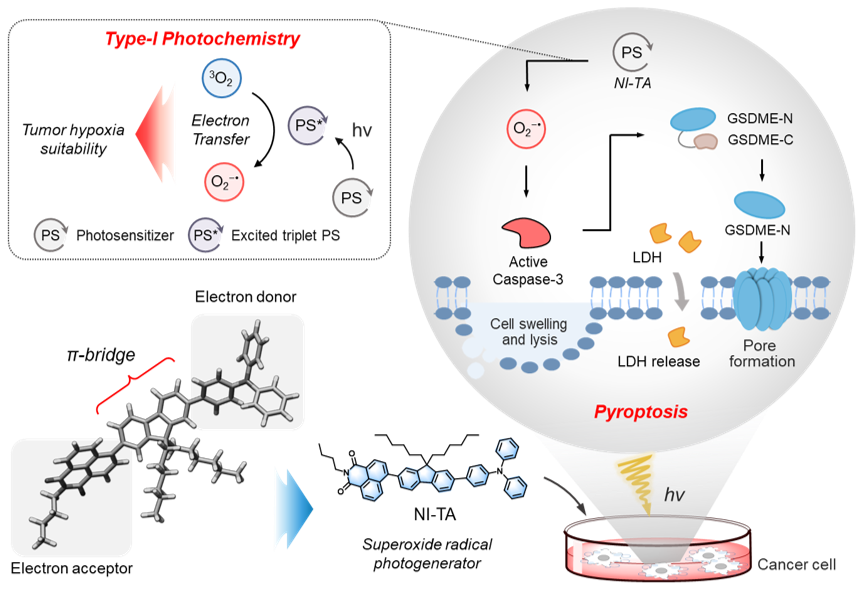
https://doi.org/10.1021/jacs.2c03256
-
Read More
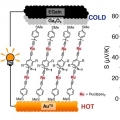
High Seebeck Coefficient Achieved by Multinuclear Organometallic Molecular Junctions
This paper describes thermoelectric property of molecular junctions incorporating multinuclear ruthenium alkynyl complexes that comprise Ru(dppe)2 (dppe = 1,2-bis(diphenylphosphino)ethane) fragments and diethylnyl aromatic bridging ligands ... -
Read More
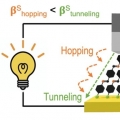
Thermopower in Transition from Tunneling to Hopping
The Seebeck effect of molecular junction in a hopping regime or tunneling-to-hopping transition remains uncertain. This paper describes the Seebeck effect in molecular epitaxy films (OPIn where n = 1 – 9) based on imine condensation b... -
Read More
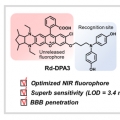
An Activity-Based Fluorescent Probe for Imaging Fluctuations of Peroxynitrite (ONOO-) in the Alzheimer's Disease Brain
Peroxynitrite (ONOO-) plays a critical role in Alzheimer's disease (AD), and the association between ONOO- and AD is inexplicit. To reveal the ONOO- influxes in AD brains, an activatable activity-based fluorescence probe Rd-DPA3 was rat... -
Read More

Deep learning for development of organic optoelectronic devices: Efficient prescreening of hosts and emitters in deep-blue fluorescent OLEDs
The highest occupied molecular orbital (HOMO) and lowest unoccupied molecular orbital (LUMO) energies, which are key factors in optoelectronic devices, must be accurately estimated for newly designed materials. Here, we developed a deep lea... -
Read More
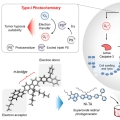
Photocatalytic Superoxide Radical Generator that Induces Pyroptosis in Cancer Cells
In this study, we show that a photocatalytic superoxide radical (O2−•) generator, NI-TA, triggers pyroptosis in cancer cells. NI-TA was designed to take advantage of an intramolecular triplet-ground state splitting energy modulat... -
Read More
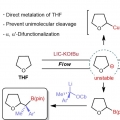
Direct C–H metallation of tetrahydrofuran and application in flow
The direct C–H metallation of tetrahydrofuran (THF) to generate α-anionic THF is one of the most straightforward methods for the the generation and utilization of α-anionic THF. Here we develop a reaction for the direct me... -
Read More
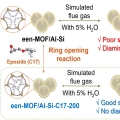
Functionalization of Diamine-Appended MOF-Based Adsorbents by Ring Opening of Epoxide: Long-Term Stability and CO2 Recyclability under Humid Conditions
Although diamine-appended metal-organic framework (MOF) adsorbents exhibit excellent CO2 adsorption performance, a continuous decrease in long-term capacity during repeated wet cycles remains a formidable challenge for practical application... -
Read More
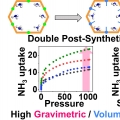
High Gravimetric and Volumetric Ammonia Capacities in Robust Metal–Organic Frameworks Prepared via Double Postsynthetic Modification
Ammonia is a promising energy vector that can store the high energy density of hydrogen. For this reason, numerous adsorbents have been investigated as ammonia storage materials, but ammonia adsorbents with a high gravimetric/volumetric amm... -
Read More
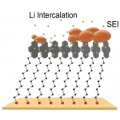
Li-ion Intercalation, Rectification, and Solid Electrolyte Interphase in Molecular Tunnel Junctions
This paper describes Li-ion intercalation into pyrenyl terminated self-assembled monolayer (SAM) on gold, inspired from graphite anode in Li-ion battery, and its effect on tunneling performance in molecular junction incorporating the SAM. A... -
Read More
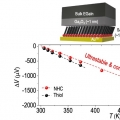
Thermopower of Molecular Junction in Harsh Thermal Environments
Molecular junctions can be miniaturized devices for heat-to-electricity conversion application, yet these operate only in mild thermal environments (less than 323 K) because thiol, the most widely used anchor moiety for chemisorption of act... -
Read More

Microfluidics-Assisted Synthesis of Hierarchical Cu2O Nanocrystal as C2-Selective CO2 Reduction Electrocatalyst
Copper-based catalysts have attracted enormous attention due to their high selectivity for C2+ products during the electrochemical reduction of CO2 (CO2RR). In particular, grain boundaries on the catalysts contribute to the generation of va... -
Read More

Chemical Fields: Directing Atom Migration in the Multiphasic Nanocrystal
Atoms in a bulk solid phase are usually trapped to fixed positions and can change their position only under certain conditions (e.g., at a melting point) due to the high energy barrier of migration between positions within the crystal latti... -
Read More
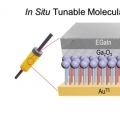
Electronic Mechanism of In Situ Inversion of Rectification Polarity in Supramolecular Engineered Monolayer
This paper describes polarity inversion in molecular rectification and the related mechanism. Using supramolecular engineered, ultrastable binary mixed self-assembled monolayer (SAM) composed of organic molecular diode (SC11BIPY) and inert ... -
Read More

Direct observation of protein structural transitions through entire amyloid aggregation processes in water using 2D-IR spectroscopy
Amyloid proteins that undergo self-assembly to form insoluble fibrillar aggregates have attracted much attention due to their role in biological and pathological significance in amyloidosis. This study aims to understand the amyloid aggrega... -
Read More

Harnessing GLUT1-Targeted Pro-oxidant Ascorbate for Synergistic Phototherapeutics
Despite extensive efforts to realize effective photodynamic therapy (PDT), there is still a lack of therapeutic approaches concisely structured to mitigate the major obstacles of PDT in clinical applications. Herein, we report a molecular s... -
Read More
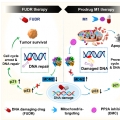
DNA-Damage-Response-Targeting Mitochondria-Activated Multifunctional Prodrug Strategy for Self-Defensive Tumor Therapy
We report a novel multifunctional construct, M1, designed explicitly to target the DNA damage response in cancer cells. M1 contains both a floxuridine (FUDR) and protein phosphatase 2A (PP2A) inhibitor combined with a GSH-sensitive linker. ... -
Read More

Midwavelength Infrared Colloidal Nanowire Laser
Realizing bright colloidal infrared emitters in the midwavelength infrared (or mid-IR), which can be used for low-power IR light-emitting diodes (LEDs), sensors, and deep-tissue imaging, has been a challenge for the last few decades. Here, ... -
Read More
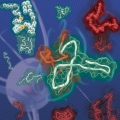
Kinetic Modulation of Amyloid-β (1–42) Aggregation and Toxicity by Structure-Based Rational Design
임동준 (제1저자, 통합과정생) Several point mutations can modulate protein structure and dynamics, leading to different natures. Especially in the case of amyloidogenic proteins closely related to neurodegenerative diseases, structural chang... -
Read More

Safeguarding the RuO2 phase against lattice oxygen oxidation during acidic water electrooxidation
Defective RuO2 possesses excellent initial activity toward the oxygen evolution reaction in acidic water electrooxidation due to the involvement of lattice oxygens, which, however, is the very reason for the accelerated dissolution of Ru sp... -
Read More
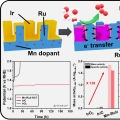
Mn-dopant differentiating the Ru and Ir oxidation states in catalytic oxides toward durable oxygen evolution reaction in acidic electrolyte
Designing an efficient and durable electrocatalyst for the sluggish oxygen evolution reaction (OER) at the anode remains the foremost challenge in developing proton exchange membrane (PEM) electrolyzers. Here we report a highly active and d...


 Deep learning for development of organic optoelectronic devic...
Deep learning for development of organic optoelectronic devic...
 Direct C–H metallation of tetrahydrofuran and application in ...
Direct C–H metallation of tetrahydrofuran and application in ...